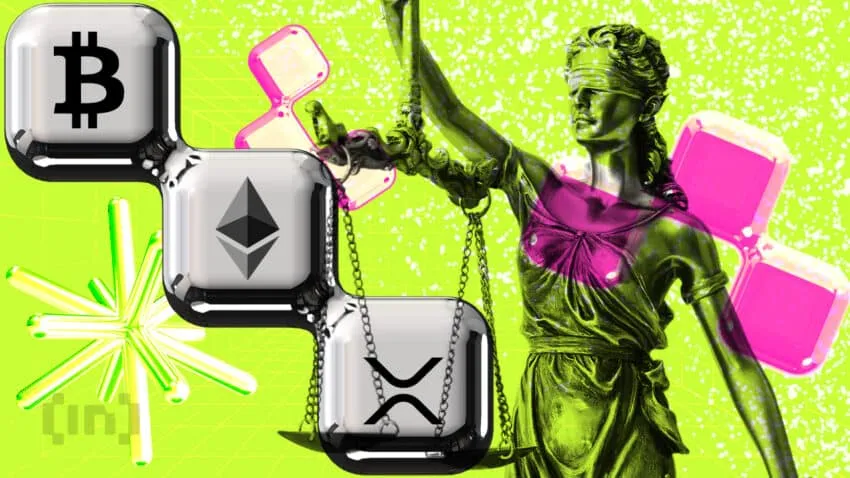Figures Cagney says blockchain for payments is approaching ‘tipping point’

Welcome to the Future of Finance, where Fortune asks prominent figures at major companies about their jobs, how their firm fits into the crypto ecosystem, and what this means for how we spend money.
The following is from a recent conversation with Mike Cagney, who co-founded SoFi and later co-founded Figure, where he is CEO. Figure built – and publicized – the Provenance blockchain, which has supported more than $12 billion in transactions.
As he explains below, the key to an increased number of transactions on the blockchain may actually be… most people don’t even realize they’re using it.
(All interviews have been edited for length and clarity.)
When you’re at a cocktail party, or talking to people who don’t know what the CEO of your company does, how do you describe it?
One of the most important roles I play with Figure and supporting the provenance ecosystem is really just evangelizing the blockchain use cases and trying to make them as tangible and accessible as possible. The most fundamental thing we’re after is the idea that blockchain allows you to displace trust with truth, so it allows you to create native digital assets where I can look at these assets and know for sure their ownership composition and history – and it allows you to trade bilaterally so that You and I can transact without an intermediary.
An obvious example is when we trade shares. It is clear that you have a buyer and seller, but between buyer and seller you have a stock exchange register that introduces clearing brokers, customers and trustees – you have at least seven parties in that transaction chain. You can distill it down to two, right? That disintermediation is what has enormous value, whether it’s businesses or customers – you’re talking about trillions of dollars in market value accruing both to the markets themselves, but also to the blockchain.
Is that part of what made SoFi so successful, eliminating many of these inefficiencies? And for you, was blockchain just the next natural step?
When I was at SoFi, I talked a lot about blockchain, but I didn’t really understand what it was and what its power was. And so I just had an aha moment about this disintermediation construct, where I said, “Wait a minute, this is actually huge—this is probably one of the most transformative technologies that we’ll experience in our lifetime.”
With relatively fewer women in tech, especially in blockchain and crypto, what are some of the lessons learned after leaving SoFi that can be used to build Figur, and just in general to make the space not only more attractive, but more inclusive?
We accomplished a lot of great things at SoFi, and we learned a lot too. We have taken this learning with us in the starting figure, especially around culture. One of the biggest changes we incorporated at Figure is hiring people for culture first. When you prioritize abilities and skills during recruitment, you can often leave culture as an afterthought. It then leads to an environment where bad behavior is tolerated when it shouldn’t be, simply because it comes from top performers. Our president and head of lending are both women, and that diversity transcends not only the leadership team, but also the organization, where we have a higher representation of women in product and engineering than the technology/fintech average.
When I looked at your site, I saw that mortgages were big, but when people use Figure now, what do you see the most interest in – are two or three things most popular?
If you think about the development of Figure, we didn’t originally set out to have a lending platform – we thought we could take the technology into the financial ecosystem and the banks would lean in and use it. When we built origination, and we went public, early on we went to a bunch of banks, and my pitch was, “Hey, you can do a securitization here and save, you know, about 90 basis points,” and every bank universally said, “This is great. We love it. We’d like to be the 10th bank to do a securitization here.”
It was very, very clear that no one was going to be a first mover and we had to be the first mover, so we made the decision to build a lending platform to create assets on the blockchain that would take the buy side. And participating, because they wanted those assets, would force the sell side to come in and provide funding on the blockchain for those assets. And that kind of started the flywheel for the ecosystem.
And lending is still a significant business for us – it’s a great business, it’s a profitable business. But what we were able to do is drive that momentum into more markets and payment transactions – we’ve been able to get high-profile names like Apollo and Hamilton Lane.
And that has led to…?
What’s happening right now that’s driving a lot is the NovaWulf-Celsius transaction, where Celsius is obviously bankrupt and NovaWulf comes in, and creates a company that these bankruptcy funds fall into. And we issue public equity against that company on the blockchain. And so, you know, this year you’re going to see a public security and public equity issuance on a blockchain — native to a blockchain. If you had asked me a couple of months ago when that would happen, I would have said we are probably a few more years away. So it really accelerates things.
You mentioned Apollo, the Celsius transaction, and maybe you’re not on the 10th bank yet, but it sounds like it’s only a matter of time. Is that fair?
We are getting significant institutional adoption at this point. It slowed down a bit in the fourth quarter because of what happened with FTX. The regulators are obviously looking very hard at everything blockchain at this point – crypto and non-crypto – but I think one of the advantages we have is that Figur is probably one of the most regulated companies in the country. I have over 200 licenses for everything, and so there’s a certain level of comfort that when you work with us, we do it in a regulatory compliant way.
If the SEC and the CFTC actually sat down and said, “Okay, here’s the plan for crypto, for Web3, for blockchain, here are all the rules – we have all these rules for banks,” would that be helpful to you, or would it not really affect the figure?
It would be great if we had a very clear direction in relation to the regulatory landscape. I have a lot of sympathy for the regulators, because things are moving very, very quickly within blockchain. There is a learning curve.
And the industry hasn’t done a good job of promoting itself. I always point out that the blockchain community never misses an opportunity to shoot itself in the foot: we’ve had the ICO debacle, we’ve had algorithmic stablecoins blow up, we’ve had, you know, decentralized exchanges – ironically centralized exchanges – running positions with lever that inflates. And then there’s just been a lot of things that have happened that have brought a lot of regulatory scrutiny into the space.
Collectively, as an industry, we need to be more proactive and educate about the benefits and benefits of blockchain for use cases and why it ultimately benefits the consumer. And I think by doing that, we can build a lot of momentum.
A year ago, when it came to potential regulations, many thought that SBF would hang out in DC and drop money on politicians. Now how much more difficult is it going to be for legitimate businesses? How do they erase that FTX skepticism?
What we need are concrete use cases where we can provide a clear demonstration of the benefits for consumers. I think the Celsius transaction—bringing transparency into a bankruptcy process—and allowing people to access liquidity and trade that security, post-bankruptcy, is a good example of that.
I think the problem we’ve had is that we started with people thinking, “Blockchain is bad – it’s used for money laundering.” And the crazy thing about it is, you know, everything you do is public, right? It is very easy to see what is happening. It is actually not a good platform for malicious activity. So we’ve had to dig out of it.
How much of that communication falls to companies like yours, or industry groups or nonprofits, or even just Twitter users evangelizing?
A lot of that burden is on ourselves, and at Figure, given the business we do to make sure we provide visibility, transparency and collaboration, I think we’ve been successful in doing that. I think in general, you know, we probably need to be more engaged.
On the lobby page you raised a very important point that you don’t want to be seen as SBF redux. There’s going to be some hesitancy among politicians because of that, but the reality is that we’re at a very important state in the blockchain lifecycle, and rules are going to be made around it. We should be engaged and work with legislators on what these rules look like.
So what’s next – for Figure and for the economy of the future?
There are a couple of fundamental changes that are going to happen – I think these are tipping point changes, I don’t think gradual – that are going to happen very quickly. One is around blockchain as payments – especially when you see stablecoin alternatives or regulated stablecoins coming to market, the ability to use that rail to displace legacy networks like the ACH exchange – where you have a programmable network that you can actually do a lot more with—I think it’s going to happen. And it’s a seismic shift because if you look at who exists within that exchange market, there’s a huge number of players and a lot of market capitalization.
I also think you’re going to see a move towards more blockchain-based securities, and that will support more centralized exchanges that are sort of decentralized exchanges on the blockchain. You will see a legitimate competitor to NASDAQ and NYSE emerge. Something like the Celsius transaction, which is the first public share of the chain, is a watershed that will bring more in, and actually provide a mechanism where there can be a competitive alternative.
The key to this is that you will never really know that you are using the blockchain under any of these circumstances. You will trade stocks – trade at a terminal, probably via your phone, through biometrics – as you do today. And that’s a key point because it reduces friction around blockchain. Where’s your wallet? How will you manage your keys? And you know, the reality is that it’s a relatively straightforward thing to solve for the consumer. At the end of the day, the consumer is going to see it as moving money or buying something or trading shares – they’re not going to see it as a blockchain transaction.
This story was originally featured on Fortune.com
More from Fortune:
























